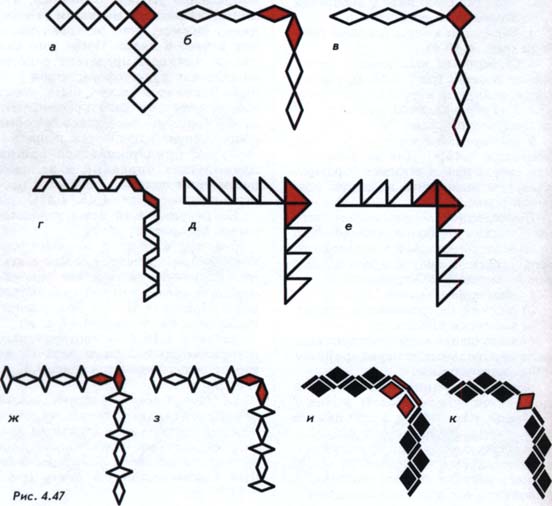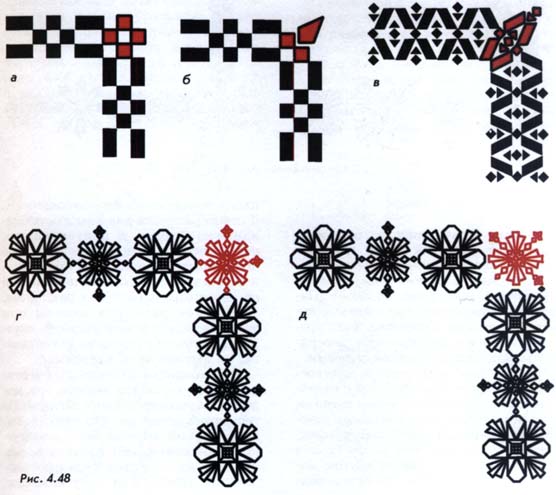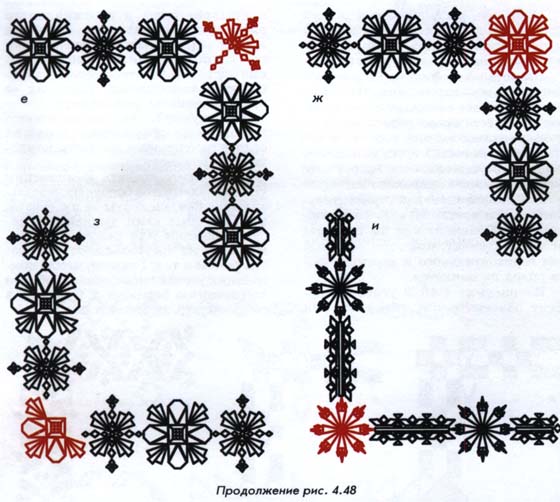We will stick to our previous descriptions, and first consider examples of turning simple chains (figure 4.46, 4.47).

Figure 4.46 the conventional scheme turns:
figure 4.46 a — element or composition of elements horizontal rows of chain is also the element of the vertical line. Examples of such processing are shown in figure 4.47 a, f;
figure 4.46 b — vertical and horizontal chains have no common element (figure 4.47 b, g, e, h, and I);
figure 4.46 in vertical and horizontal rows of chains together an independent element which defines the shape of the corner, creating in it a specific composite center (figure 4.47).

When making turns in one of the chains of the composition have a large number of design options, but they can help and play a role of schemes in designing compositions of twists of other kinds of ornaments: complex chains and borders (figure 4.48 a).


Figure 4.48 and turn to the decorated item, which also included the composition of the vertical and horizontal lines of the ornament, which corresponds to the diagram (figure 4.46 a).
Figure 4.48 b shows the rotation of the same ornament as in the previous example, but the area has a composition different from the composition of the ornament.
Figure 4.48 shows an example in turn of the curb. The composition of the area changed slightly compared to the rapport of the ornament, but close to it.
The examples considered in the last two cases can be attributed to the turns executed according to the scheme given in figure 4.46 V.
The remaining drawings are considered some of the options turns the most difficult types of ornaments — friezes with rosettes (figure 4.48, g—I).
Figure 4.48 g, W, and rotation of the border is around elements, which are equally fit into the composition, both horizontal and vertical rows of ornaments. Ornament as if flows through the element, the perception of horizontal and vertical rows is not changed.
Figure 4.48 d angle element deployed at an angle of 45°. It interrupts the rhythm and vertical rows, and horizontal, forcing the eye to linger on this element. Such small changes often make a variety of perception of the composition, enhancing its artistic features.
In figure 4.48, e, f, h shows two more options design area based on the changed element of the composition ornament.
You can create the composition of the corner pieces of the borders, using simple elements and their combinations, which themselves highlight in the picture of the outlet or chains, for example, the fan of triangles, squares, diamonds, etc that the composition of the area supported the overall composition of the curb and it was in turn supported.



